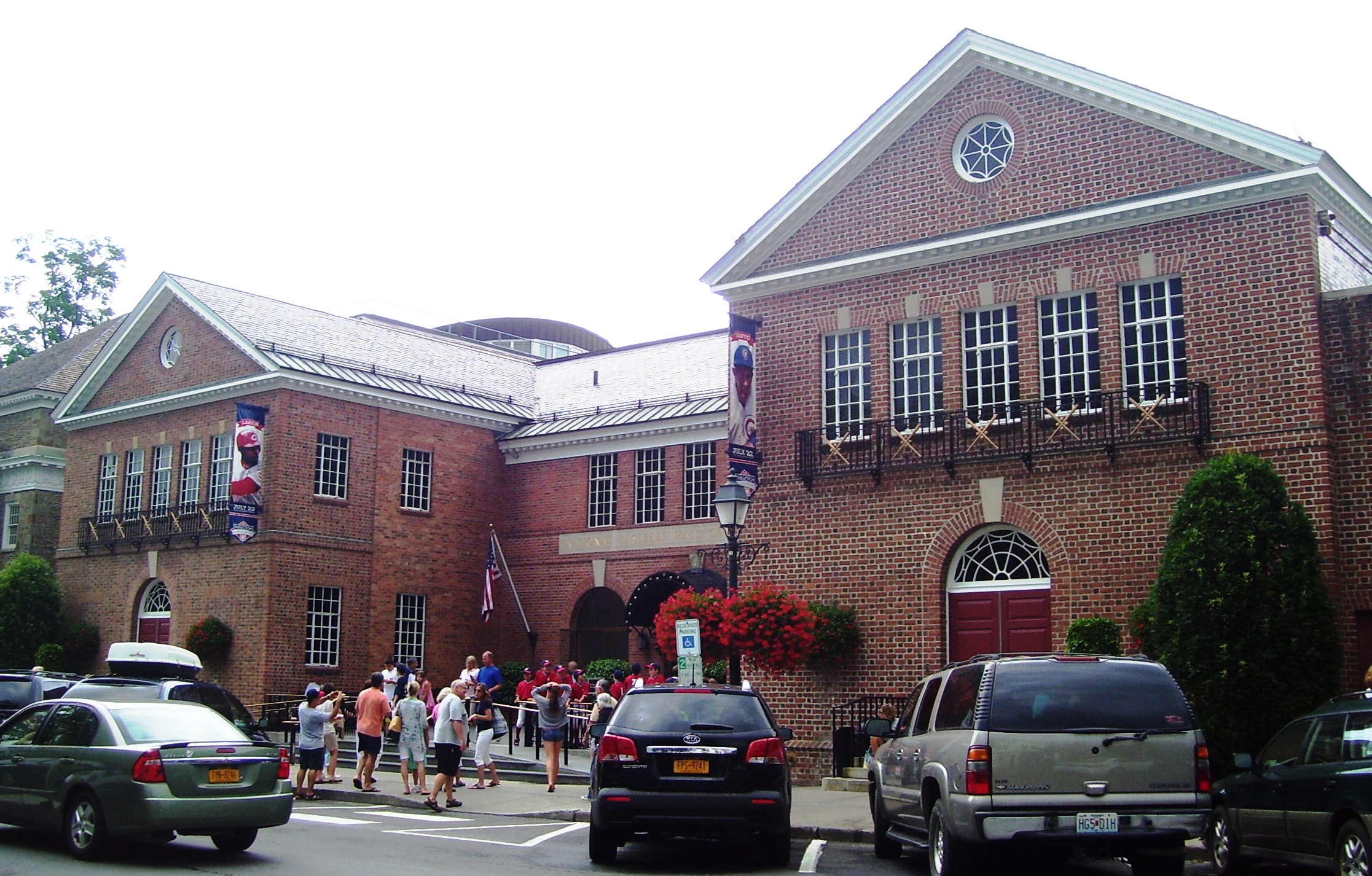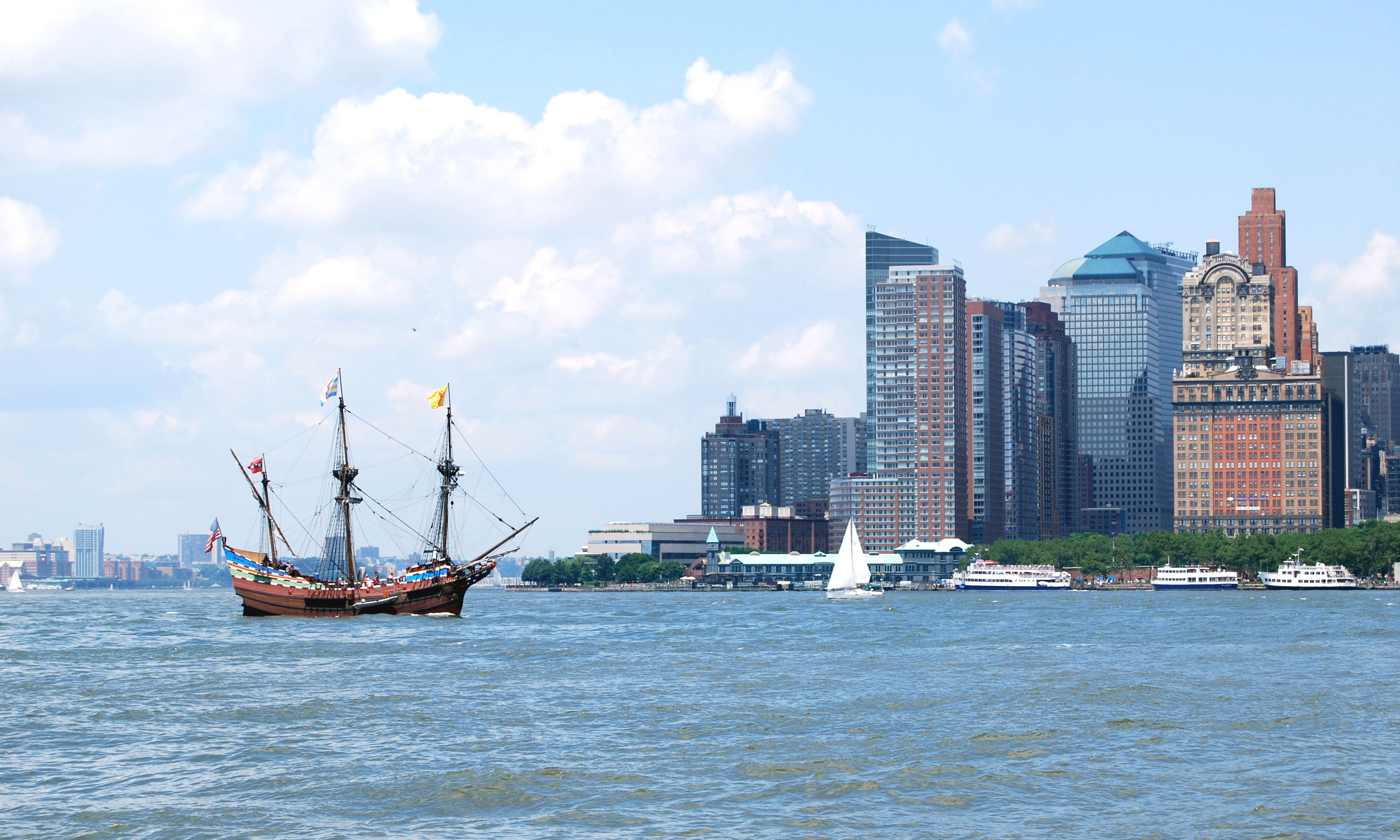|
Burlington Company
{{No footnotes, date=August 2023 The Burlington Company was a group of eight investors involved in a variety of land transactions, particularly in what is now Otsego County, New York. The company was named after Burlington, New Jersey, where the men all resided. History The Burlington Company included William Franklin, the last Colonial Governor of New Jersey (1763-1776). The company purchased various mortgages of George Croghan between 1768 and 1770. The mortgages, issued to William Franklin and assigned by him to the company, included one for 40,000 acres (160 km2) of Croghan's Otsego County, New York, purchase. Franklin was an attorney, a British Loyalist, and the son of Benjamin Franklin. In addition to making personal loans to Croghan, Franklin purchased a 50% stock interest in the Burlington Company in 1772. In 1773, the remaining original shareholders sold their stock and rights, including Franklin's mortgages, to Andrew Craig (merchant) and William Cooper. Cooper ... [...More Info...] [...Related Items...] OR: [Wikipedia] [Google] [Baidu] |
Otsego County, New York
Otsego County is a county in the U.S. state of New York. As of the 2020 census, the population was 58,524. The county seat is Cooperstown. The name ''Otsego'' is from a Mohawk or Oneida word meaning "place of the rock." History In 1789, Ontario County was split off from Montgomery. The area split off from Montgomery County was much larger than the present county, as it included the present Allegany, Cattaraugus, Chautauqua, Erie, Genesee, Livingston, Monroe, Niagara, Orleans, Steuben, Wyoming, Yates, and part of Schuyler and Wayne counties. Formation Otsego County was one of three early counties split off from Montgomery (the other two being Herkimer and Tioga) after the American Revolutionary War. Otsego County was officially established on February 16, 1791, with Cooperstown as its county seat. The original county consisted of three large townships: * Cherry Valley in the northeast, * Otsego in the northwest, and * Harpersfield in the south. Otsego a ... [...More Info...] [...Related Items...] OR: [Wikipedia] [Google] [Baidu] |
Cooperstown, New York
Cooperstown is a village in and county seat of Otsego County, New York, United States. Most of the village lies within the town of Otsego, but some of the eastern part is in the town of Middlefield. Located at the foot of Otsego Lake in the Central New York Region, Cooperstown is approximately southwest of Albany, southeast of Syracuse and northwest of New York City. The population of the village was 1,852 as of the 2010 census. Cooperstown is the home of the National Baseball Hall of Fame and Museum. The Farmers' Museum in the village opened in 1944 on farmland that had once belonged to James Fenimore Cooper. The Fenimore Art Museum and Glimmerglass Opera are also based here. Most of the historic pre-1900s core of the village is included in the Cooperstown Historic District, which was listed on the National Register of Historic Places in 1980; its boundaries were increased in 1997 and more contributing properties were identified. History Native American use Before E ... [...More Info...] [...Related Items...] OR: [Wikipedia] [Google] [Baidu] |
James Truslow Adams
James Truslow Adams (October 18, 1878 – May 18, 1949) was an American writer and historian. He was a freelance author who helped to popularize the latest scholarship about American history and his three-volume history of New England is well regarded by scholars. He popularized the phrase " American Dream" in his 1931 book ''The Epic of America''. Early life Adams was born in Brooklyn, New York, to a wealthy family, the son of Elizabeth Harper (née Truslow) and stockbroker William Newton Adams Jr. His father had been born in Caracas, Venezuela. His paternal grandfather, William Newton Adams Sr., was American of English descent with roots in Virginia and his paternal grandmother, Carmen Michelena de Salias, a Venezuelan of Spanish descent back to Gipuzkoa in the eighteenth century and a family from Seville. The earliest paternal ancestor was Francis Adams from England, an indentured servant who settled the Province of Maryland in 1638. Adams took his bachelor's degree from ... [...More Info...] [...Related Items...] OR: [Wikipedia] [Google] [Baidu] |
History Of New York (state)
The history of New York begins around 10,000 B.C. when the first people arrived. By 1100 A.D. two main cultures had become dominant as the Iroquoian and Algonquian developed. European discovery of New York was led by the Italian Giovanni da Verrazzano in 1524 followed by the first land claim in 1609 by the Dutch. As part of New Netherland, the colony was important in the fur trade and eventually became an agricultural resource thanks to the patroon system. In 1626 the Dutch thought they had bought the island of Manhattan from Native Americans. In 1664, England renamed the colony New York, after the Duke of York and Albany, brother of King Charles II. New York City gained prominence in the 18th century as a major trading port in the Thirteen Colonies. New York played a pivotal role during the American Revolution and subsequent war. The Stamp Act Congress in 1765 brought together representatives from across the Thirteen Colonies to form a unified response to British policie ... [...More Info...] [...Related Items...] OR: [Wikipedia] [Google] [Baidu] |
List Of Real Estate Topics
This aims to be a complete list of the articles on real estate. __NOTOC__ # * 72-hour clause A * Abandonment * Abstract of title * Acceleration clause * Accession * Acknowledgment * Acre – a measure of land area * Action to quiet title * Ad valorem tax * ADA * Adjustable-rate mortgage (ARM) * Adjusted basis * Administrator/Administratrix * Adverse possession * Agency – Real estate agency, Buyer brokerage * Agent – Real estate agent or broker, Estate agent * Agreement * Air rights * Al Ramz * Alienation * Allodial, Allodium * Allodial title * Alluvion * Amenity * American Land Title Association (ALTA) * Americans with Disabilities Act of 1990 * Amortization calculator * Amortization schedule * Amortizing loan * Anchor store * Annexation * Annual percentage rate * Apartment * Appraisal, real estate * Appraised value – An estimate of the present worth of a property * Appreciation * APR * Appurtenance * Appurtenant easement * ARELLO * Arm's length transaction ... [...More Info...] [...Related Items...] OR: [Wikipedia] [Google] [Baidu] |
James Fenimore Cooper
James Fenimore Cooper (September 15, 1789 – September 14, 1851) was an American writer of the first half of the 19th century, whose historical romances depicting colonist and Indigenous characters from the 17th to the 19th centuries brought him fame and fortune. He lived much of his boyhood and the last fifteen years of life in Cooperstown, New York, which was founded by his father William Cooper (judge), William Cooper on property that he owned. Cooper became a member of the Episcopal Church (United States), Episcopal Church shortly before his death and contributed generously to it. He attended Yale University for three years, where he was a member of the Linonian Society.#Lounsbury, Lounsbury, 1883, pp. 7–8 After a stint on a commercial voyage, Cooper served in the U.S. Navy as a midshipman, where he learned the technology of managing sailing vessels which greatly influenced many of his novels and other writings. The novel that launched his career was ''The Spy (Cooper nov ... [...More Info...] [...Related Items...] OR: [Wikipedia] [Google] [Baidu] |
American Revolutionary War
The American Revolutionary War (April 19, 1775 – September 3, 1783), also known as the Revolutionary War or American War of Independence, was a major war of the American Revolution. Widely considered as the war that secured the independence of the United States, fighting began on April 19, 1775, followed by the Lee Resolution on July 2, 1776, and the Declaration of Independence on July 4, 1776. The American Patriots were supported by the Kingdom of France and, to a lesser extent, the Dutch Republic and the Spanish Empire, in a conflict taking place in North America, the Caribbean, and the Atlantic Ocean. Established by royal charter in the 17th and 18th centuries, the American colonies were largely autonomous in domestic affairs and commercially prosperous, trading with Britain and its Caribbean colonies, as well as other European powers via their Caribbean entrepôts. After British victory over the French in the Seven Years' War in 1763, tensions between the motherland and he ... [...More Info...] [...Related Items...] OR: [Wikipedia] [Google] [Baidu] |
Burlington, New York
Burlington is a town in Otsego County, New York, United States. The population was 1,140 at the 2010 census. The Town of Burlington is in the northwestern part of the county and is located north of Oneonta. Geography According to the United States Census Bureau, the town has a total area of , of which is land and (0.13%) is water. An 1878 history of the county states the acreage as 27,217, with an assessed valuation of $421,450 and equalized valuation of $473,576. North-south highway New York State Route 51 and east-west highway New York State Route 80 intersect at Barrett Corners. North-south highway county route 16 and east-west highway New York State Route 80 intersect at Burlington Green. Butternut Creek and Wharton Creek are important waterways in the town. History Early settlers came from New England. Township named after Burlington, New Jersey by William Cooper and Andrew Craig, early land patent owners. At an early time the Butternut Creek was dubbed "Burlin ... [...More Info...] [...Related Items...] OR: [Wikipedia] [Google] [Baidu] |
Burlington, New Jersey
Burlington is a city in Burlington County, in the U.S. state of New Jersey. It is a suburb of Philadelphia. As of the 2020 United States census, the city's population was 9,743. Burlington was first incorporated on October 24, 1693, and was reincorporated by Royal charter on May 7, 1733. After American independence, the city was incorporated by the State of New Jersey on December 21, 1784. On March 14, 1851, the city was reincorporated and enlarged with portions of the surrounding township.Snyder, John P''The Story of New Jersey's Civil Boundaries: 1606–1968'' Bureau of Geology and Topography; Trenton, New Jersey; 1969. p. 94. Accessed June 14, 2012. Burlington was originally the county seat of Burlington County. In 1796, in response to the growth of population to the east away from the Delaware River, the county seat was moved to Mount Holly Township, a more central location. History The council of West Jersey Proprietors purchased roughly of riverfront land in 1676 from ... [...More Info...] [...Related Items...] OR: [Wikipedia] [Google] [Baidu] |
William Cooper (judge)
William Cooper (December 2, 1754 – December 22, 1809) was an American merchant, land speculator and developer, the founder of Cooperstown, New York. A politician, he was appointed as a county judge and later served two terms in the United States Congress, representing Otsego County and central New York. He was the father of James Fenimore Cooper, who became a noted writer of historical novels related to the New York frontier. Life William Cooper was born in 1754 in a log house in Smithfield (now Somerton) in the Province of Pennsylvania, just outside Philadelphia, the son of English Quaker parents,James Cooper (b. Byberry, Philadelphia, 1729–1795) and Hannah (Hibbs) Cooper. He appears to have first worked as a wheelwright in and around Byberry. There is no record of his attending school. He later settled in Burlington, New Jersey, a Quaker city. Marriage and family On December 12, 1774, in Burlington, he was married by a civil magistrate to Elizabeth Fenimore, daughter of ... [...More Info...] [...Related Items...] OR: [Wikipedia] [Google] [Baidu] |




.jpg)
.png)